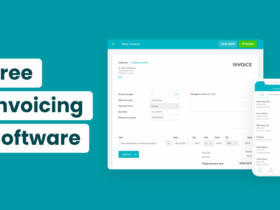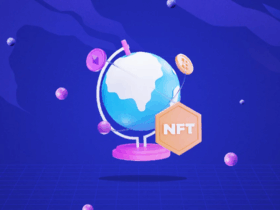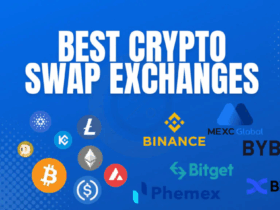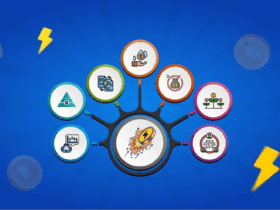What Is Crypto Airdrop?
Blockchain projects can use a crypto airdrop as a marketing tactic to give out free tokens or cryptocurrency to a targeted set of people in the community. These giveaways, often known as “airdrops,” are generally intended to reward current holders, spread the word about a project, or advertise a new cryptocurrency.
Although airdrops can be carried out in a variety of methods, they usually require recipients to fulfil specific requirements, such having a specific cryptocurrency in their wallets, being active on social media, or taking part in the project’s community.
Getting noticed, developing a user base, and giving tokens to possible stakeholders are the objectives. Users should proceed with caution even if there are legitimate airdrops that attempt to promote community interaction; there are harmful or fraudulent airdrops in the crypto realm that prey on gullible participants.
What Is Mind Network Airdrop?
Mind Network Airdrop is one of the first tokenized startups to apply the long-awaited ‘Holy Grail of Encryption’ to Web3. Mind Network is a Zero Trust Layer that offers a security and data privacy solution that achieves true CrossFi scale, complying with regulatory requirements while staying true to Web3 principles of asset tokenization and individual data ownership.
Mind Network Airdrop has raised $2.5M in funding from investors like Binance Labs and SevenX Ventures. They don’t have their own token yet but could launch one in the future. They’ve launched a testnet campaign, and users who do participate may get an airdrop if they launch their own token.
Basic Mind Network Airdrop Points
| Basic | Details |
|---|---|
| Token Name | Mind Network Airdrop |
| Platform | Polygon |
| Support | 24/7 |
| Total value | N/A |
| KYC | KYC Is Not Requirement |
| Whitepaper | Click Here To View |
| Max. Participants | Unlimited |
| Collect Airdrop | Click Here To Collect Free Airdrop |
How To Claim Mind Network Airdrop Step-by-Step Guide:
- Visit the Mind Network testnet page.
- Click on “Connect wallet”.
- Change the network to Polygon Mumbai testnet. You can add it from Chainlist.
- You will need some testnet MATIC. You can get it from here.
- Now click on “Register” and sign the message.
- Also, repeat the above steps using a different wallet.
- Now go to “Transfer” and send some MATIC from your wallet to the second wallet you’ve registered.
- Try to do transfers on multiple wallets.
- Now complete the Galxe tasks.
- They don’t have their own token yet but could launch it in the future.
- Early users who do the testnet actions may get an airdrop if their token goes live.
- Please note that there is no guarantee that they will launch their own token or do an airdrop to early users. It’s only speculation.
How To Check Mind Network Airdrop Is Real Or Fake
Checking the legitimacy of a crypto airdrop can be a bit tricky, as scammers often use sophisticated techniques to create fraudulent airdrop campaigns that appear to be legitimate. Here are some steps you can take to verify the authenticity of a crypto airdrop:
- Official internet page: See Mind Network’s official website. Make sure the URL corresponds to the official domain and is accurate. Avoid visiting phishing websites that appear to be similar yet have slightly different URLs.
- Channels for Announcements: For announcements on the airdrop, check official outlets like the project’s blog, official website, or social media accounts. Reputable initiatives frequently notify their communities through formal announcements.
- Verification on Social Media: Check details on official social media platforms. Keep an eye out for updates, posts, and announcements about the airdrop. Social media profiles are frequently used by official projects as a means of community communication.
- Documentation and Whitepaper: Examine the official documents and whitepaper on the project. Authentic projects typically possess meticulously recorded strategies and information on their token distribution and airdrops.
- Community Discussion Boards: Check out official community forums on sites like Telegram or Discord. Communities that are engaged and active are hallmarks of legitimate projects. Seek out formal declarations or updates from the project group.
- In summary, it’s important to conduct thorough research, verify the source and instructions, look for feedback from other users, and trust your instincts when evaluating the legitimacy of a crypto airdrop. By taking these steps, you can minimize the risk of falling for a fraudulent airdrop and protect your assets and personal information.
What are the risks of participating in an airdrop?
There are certain risks associated with airdrop participation that people should be aware of before participating. The possibility of fraud and frauds is one of the main worries. False airdrops could be made by malicious actors to trick participants, resulting in the loss of money or personal data.
Furthermore, sharing private keys or wallet addresses may be necessary for certain airdrops, which could be risky for users’ security if not handled carefully. In addition, taking part in airdrops from unidentified or questionable projects could expose participants to shaky tokens or enterprises with little to no value, which could result in losses of money.
Mind Network Airdrop Pros Or Cons
Pros of participating in an airdrop:
- Modern Encryption Technology: Mind Network bills itself as a leader in integrating cutting-edge encryption technology with Web3, providing what’s known as the ‘Holy Grail of Encryption.’ This dedication to state-of-the-art security measures improves user protection and data privacy overall.
- Zero Trust Layer: The use of a Zero Trust Layer signifies a high priority for security. This method strengthens the defence against potential security threats and unauthorised access by guaranteeing that no entity, even after authentication, is automatically trusted.
- CrossFi Scale: Mind Network asserts scalability across various decentralised financial (DeFi) networks by achieving full CrossFi scale. Scalability is essential for managing higher transaction volumes and guaranteeing effective operation on the blockchain network.
Cons of participating in an airdrop:
- Lack of a Token: Mind Network does not yet have a token, which may restrict users’ access to instant benefits. The ecosystem’s functionality and the incentives for users to engage in active participation may be impacted by the lack of a native coin.
- Uncertainty About Token Launch: Although the project makes reference to the potential for a future token launch, investors and potential users may become uneasy due to the lack of clarity surrounding the specifics, particularly the tokenomics and utility.
- Dependency on Funding: Although the project managed to acquire significant investments, its long-term sustainability and independence remain uncertain due to its dependency on outside funding. Mind Network’s capacity to succeed might depend on whether it can get more money or make its activities self-sustaining.
Mind Network Final Verdicts
In conclusion, Mind Network emerges as a pioneering force in the realm of tokenized startups, successfully integrating the much-anticipated ‘Holy Grail of Encryption’ into the fabric of Web3. As a Zero Trust Layer, it not only provides a robust security infrastructure but also champions the cause of data privacy, aligning itself with the core principles of Web3 such as asset tokenization and individual data ownership.
The achievement of true CrossFi scale signifies a significant stride in the platform’s capability to meet the demands of a decentralized and secure digital landscape, all while ensuring compliance with regulatory standards. Mind Network’s commitment to maintaining a delicate balance between cutting-edge technology and adherence to regulatory requirements positions it as a reliable and responsible player in the evolving landscape of decentralized applications.
Securing $2.5 million in funding from reputable investors like Binance Labs and SevenX Ventures underscores the industry’s confidence in the platform’s potential. While currently lacking its own token, the prospect of a future token launch adds an intriguing layer to Mind Network’s trajectory.
The initiation of a testnet campaign provides an opportunity for users to engage with the platform firsthand, and the potential for an airdrop for participants upon the launch of their own token further incentivizes community involvement. As Mind Network navigates this exciting phase of development, it stands poised to contribute significantly to the evolution of Web3 by seamlessly combining security, compliance, and the principles of decentralization.









































